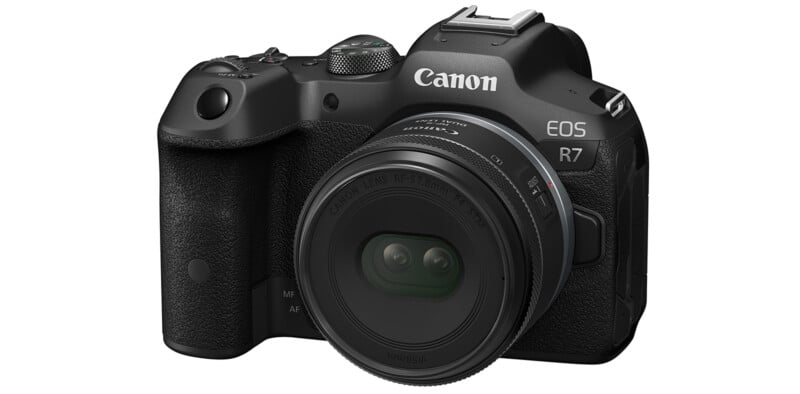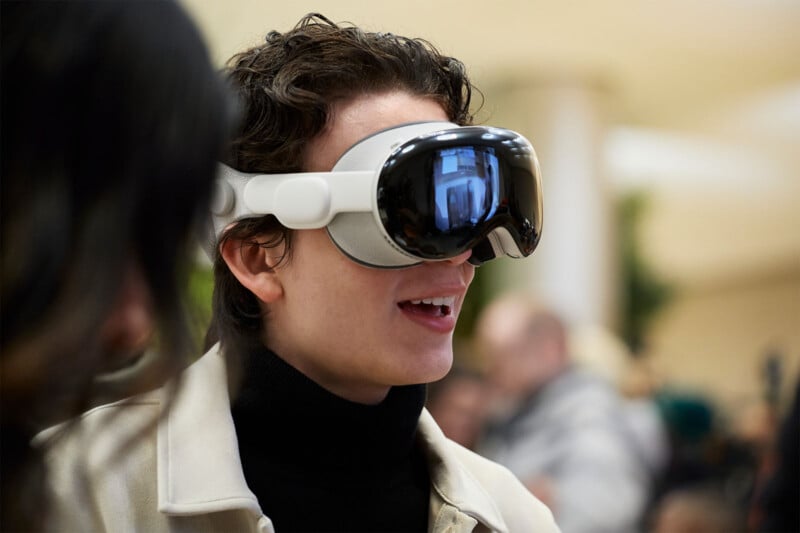![]()
While Apple’s Vision Pro spatial computing headset is extremely impressive from a technological perspective and has some incredible tricks up its sleeve, it’s a tough sell given its eye-watering $3,499 starting price and relative lack of content. Apple’s WWDC keynote demonstrated that the company is working hard to tackle the second hurdle.
Blackmagic Enables Pros With New Camera and Software for Vision Pro Video Content
Creating visual content optimized for Apple Vision Pro requires specialized hardware and software. Blackmagic Design, a massive name in the cinema space, announced the Ursa Cine Immersive, a dual-lens camera that captures 8,160 x 7,200 pixels of resolution per eye at up to 90 frames per second, which is beyond 8K UHD per eye.
![]()
Joining Blackmagic’s hardware announcement is a reveal of an entire immersive video system workflow for Apple Vision Pro, including not only the Ursa Cine Immersive camera but updates to DaVinci Resolve to allow filmmakers to edit Apple Immersive Video for the first time.
“We are thrilled to announce the first-ever commercial camera system and post-production software that supports Apple Immersive Video, giving professional filmmakers the tools to create remarkable stories with this powerful new format pioneered by Apple,” says Grant Petty, Blackmagic Design CEO. “Built on the new URSA Cine platform, URSA Cine Immersive features a fixed, custom, stereoscopic 3D lens system with dual 8K image sensors that can capture 16 stops of dynamic range. With this innovative system, filmmakers can record remarkable moments like action-packed scenes, unique perspectives, stunning landscapes, intimate performances, and more, all with incredible fidelity, offering viewers an unparalleled sense of realism and immersion.”
Canon Enables Vision Pro Video for the Rest of Us
This “world’s first” commercial camera system for Apple Immersive Video is flanked by exciting news from Canon, including that the company is making Apple Certified hardware and software for Vision Pro.
While Canon revealed the RF-S 3.9mm f/3.5 Dual Fisheye Lens for VR content creation yesterday on APS-C Canon cameras, a second new APS-C VR lens showed up in Apple’s WWDC keynote presentation, the RF-S 7.8mm f/4 STM Dual. This lens, currently in development, is explicitly designed to support spatial video capture for Apple Vision Pro. It will be Canon’s first-ever Apple Certified input device and the first input device made by any company not named Apple.
The pair of optics in the new RF-S 7.8mm lens is designed to mimic the distance between two cameras on an iPhone currently used to capture spatial video with compatible Apple smartphones. However, iPhone sensors are significantly smaller than the APS-C sensor in Canon’s RF-S compatible mirrorless cameras.

Alongside the new lens, Canon has also announced that it’s making an EOS VR Utility app for iOS that converts footage captured with its new lens into Vision Pro-compatible spatial video.
“You can record memories spent with family, friends, pets, and other scenes from your travels in high-quality live-action footage, and relive precious memorable scenes with a sense of realism through Spatial Video,” Canon says.
Vision Pro Needs More Than Apple Can Create
Thus far, Apple has been the primary creator of content tailor-made for Apple Vision Pro. Some immersive videos, complete with a 180-degree field of view and spatial audio, are available now for Apple Vision Pro, but the selections are relatively limited.
While users can certainly enjoy more traditional 2D or even 3D content on Apple Vision Pro, the device’s full capabilities require special content captured and edited in a specific system. In this area, Vision Pro has fallen short.
Apple getting big names like Blackmagic and Canon on board could significantly improve not only the type of content users can enjoy on Vision Pro but also ensure that creating content for Vision Pro is accessible and feasible for creators, amateurs, and professionals alike.
That said, Apple finds itself in a somewhat odd position — one the company probably isn’t used to being in. On the one hand, Vision Pro sorely needs content. But on the other hand, creating optimal content requires specialized hardware and software. Getting companies to invest in a new platform when it is as small as it is right now is a big ask.

To sell Vision Pro in more significant numbers and build the ecosystem Apple envisions, where spatial computing is not just a pipedream but a reality for many, the device needs ways to attract early adopters, like native apps and content. However, to get companies to create what Vision Pro requires, they need to be able to appeal to a broad audience.
Apple’s approach to working with third parties to facilitate content creation seems wise, but it is only one step in a challenging journey toward making Vision Pro a smash hit. Nonetheless, it’s exciting to think about what people can make with Blackmagic and Canon’s latest products. And ultimately, excitement is precisely what Vision Pro requires.
